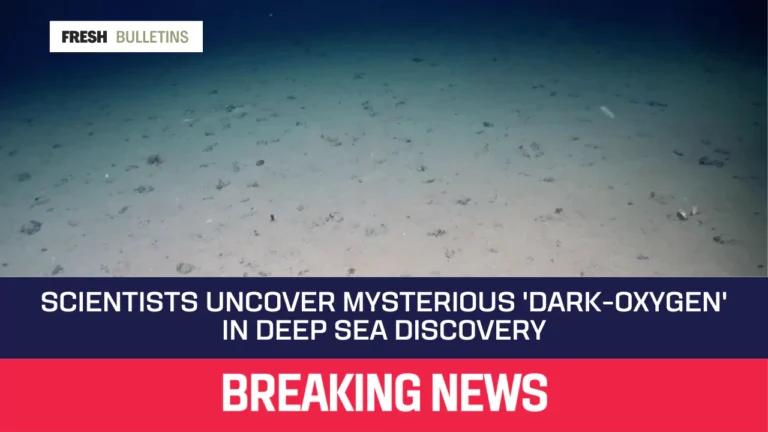New Study Reveals Massive Underground Ocean on Mars
A new study shows a huge amount of water deep beneath the surface of Mars. Scientists believe it may be enough to fill large oceans. Most of this water exists in tiny cracks and pores in rocks at depths of 7 to 13 miles. This discovery helps us understand more about Mars and its history.
Mars Was Wet Long Ago
Scientists believe Mars once had rivers and oceans. This planet was very different billions of years ago. Most of the water is now ice on the surface, found mainly at the poles. However, researchers have found that a lot of liquid water remains hidden below.
Mars lost its atmosphere long ago. This change caused the water to escape into space. Many scientists have wondered what happened to all that water. Recent studies show that much of it did not leave the planet. Instead, it sank deep into the Martian crust.
How Scientists Found the Water
To find this water, scientists used a tool called the InSight lander, which landed on Mars in 2018. This lander picked up vibrations and data about the planet’s interior. The information allowed scientists to look deep into Mars. They saw that many areas below the surface had fractured rock filled with water.
This study shows that there is liquid water under the ground. The water is located in the middle crust. This region has enough water to cover the entire planet to a depth of 1 to 2 kilometers. This is a huge amount of water for such a dry-looking planet.
Where Is the Water Located?
The water is found between 7 and 13 miles deep in the crust. This makes it very difficult to reach. Even on Earth, drilling that deep is a big challenge. Scientists believe that this layer of water can give us clues about Mars’ past climate.
The top five kilometers of Mars appear to be dry. Below that, however, there is a layer of rocks that holds water. This finding is exciting because it means that Mars may have areas where life could exist, even though we have not yet found any signs of life on the planet.
Why This Water Matters
Water is a key ingredient for life. Finding a massive underground ocean increases the chances that life could exist on Mars. This possibility is important for future missions to the planet. If astronauts ever visit Mars, they will need water. The hidden water could support future colonies on Mars.
Understanding where the water is located also helps scientists learn about Mars’ geology. It explains how the planet changed over time. This knowledge could help us understand other planets and moons in our solar system that might have water.
Evidence from the Past
Scientists have found evidence that water flowed on Mars’ surface. There are river channels, lake deposits, and deltas that show where water used to be. This suggests that Mars was wet long ago. However, changes in the atmosphere led to the loss of most of this water.
With this new study, researchers argue that much of the water sank down into the crust rather than disappearing into space. The evidence shows that the water did not vanish entirely but went underground.
Future Research
Further investigation is required to gain a comprehensive understanding of the ramifications associated with this groundbreaking discovery. Scientists will diligently analyze the data collected by the InSight lander. The objective is to acquire a deeper understanding of the attributes and properties of this subterranean body of water.
Future missions to Mars may use new technology to explore the depths of the crust. Rovers and other landers could be sent to find out more about the water’s location and its potential to support life.
Conclusion
The new study about the underground oceans on Mars opens up a world of possibilities. This hidden water could provide vital information about Mars’ history and its ability to host life. It highlights the importance of water in understanding the planet’s past climate and geologic processes.
Mars may look dry and barren from space, but beneath its surface lies a treasure of liquid water. Future exploration will be critical in uncovering the mysteries of this water, and it will help answer the questions scientists have about life beyond Earth. The findings from this study will be important for our journey to Mars and our understanding of other worlds in the universe.







